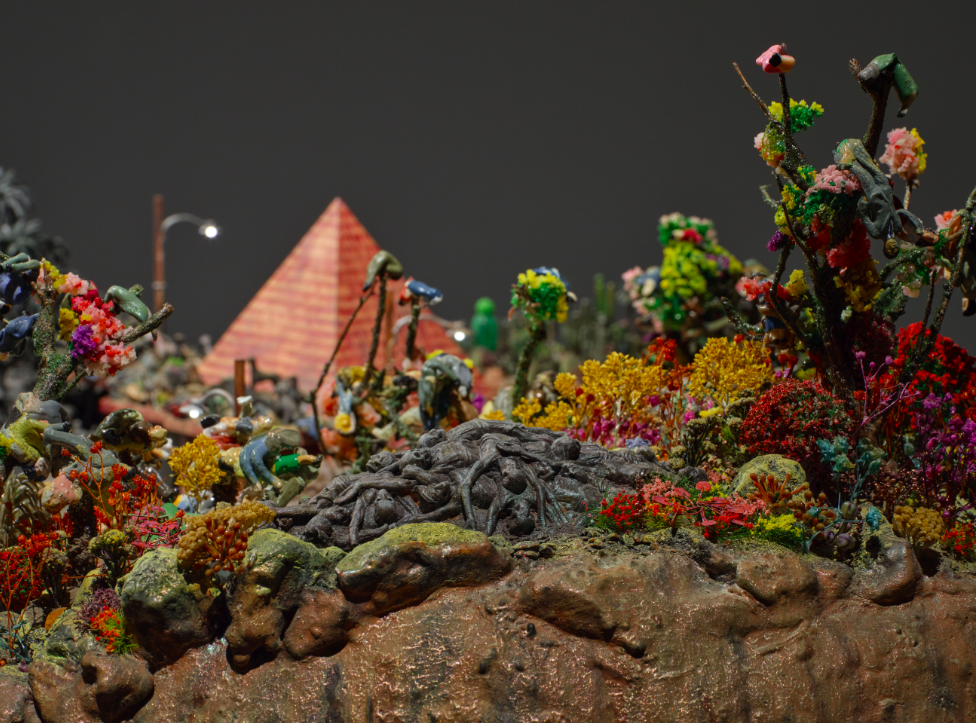When I first met Max Hooper Schneider in 2015, he wore neon-colored costume jewlery up and down both of his ears. During that time, Max frequented Claire’s (the fast-fashion jewlery retailer) at the 3rd Street Promenade in Santa Monica where he was sure to get an infection, which he explained was half the fun. This sadistic anecdote sums up Max and his art practice—part punk, part science experiment where bodies are uncontained Petri dishes, porous assemblages of flesh and artifice, a leaky cesspool of bodies and materials that endlessly morph and mutate. A vital materialist, Hooper Schneider finds resurgent life amidst ruins where extremophiles crawl, festering in our terrestrial wasteland.
In a new body of work, broccoli and knobs of corn rot from the inside out, encased by copper, baroque shells that corrode as the fruits and vegetables decompose. The viewer’s perspective shifts between gargantuan and infinitesimal, between consumer and consumed. Diabolical and fantastic, Hooper Schneider imagines sublime, luminous landscapes where stories, dreams and myths of progress are traced in human wreckage. An underlying pathos and dark humor pervade Hooper Schneider’s infernal landscapes. In his feral theater, the presence of humankind is “invisible.” In other words, humans exist as no more than traces of discarded signs, occupying a dreg-like presence, fossilized delusions of our historic solipsism. At the base of the installation titled Falling Angel—made of aircraft wreckage, fluorescent light tubes, and Tesla coils—words scrawled in vintage neon lights read like glyphs embedded in a dirt crater formed by a monstrous foot, secreting remnants of human stories that sink into earth’s sludge forming a cesspit of dreams and desires.
Hooper Schneider often speaks of primordial ooze, which brings to mind one of my favorite short stories by Italo Calvino—a fantastic fictional tale about mitosis, meiosis and death. Calvino writes: “The risk we ran was living: living for ever. The threat of continuing weighed, from the very start, on anyone who has by chance begun. The crust that covers the Earth is liquid: one drop among the many thickens, grows, little by little absorbs the substances around it, it is a drop-island, gelatinous, that contracts and expands, that occupies more space at each pulsation. It’s a drop-continent that spreads its branches over the oceans, makes the poles coagulate, solidifies its mucus-green outlines on the equator, if it doesn’t stop in time it gobbles up the globe. The drop will live, only that drop, for ever….a mucilaginous sphere with the Earth as its kernel, a gruel that contains the matter for the lives of us all, because we are all arrested in this drop that will never let us be born or die, so life will belong to it and to nobody else.”
François Ghebaly
2245 E Washington Boulevard
Los Angeles, CA 90021
On view through June 20, 2023


